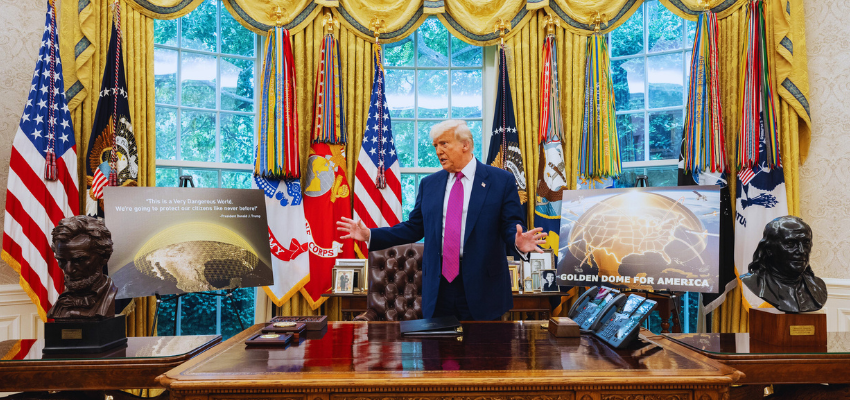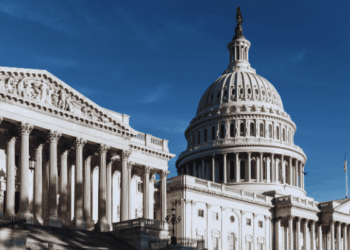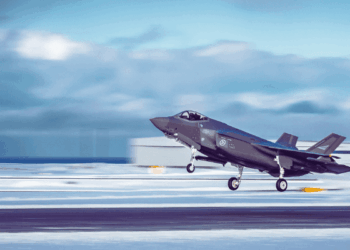This article originally appeared in iPolitics.
By Christopher Coates, September 11, 2025
The Canadian government has left the door open to participate in President Trump’s Golden Dome project. Not only does this make sense, Canada should lead in the development of essential capabilities for the Golden Dome.
Canadian’s distaste for Donald Trump aside, Golden Dome – or something like it – is the only way to protect the populations and critical infrastructure in the United States and Canada from overhead threats that can cause significant death and harm today, let alone in the foreseeable future.
The first duty of the Canadian government, like all governments around the world, is to protect the safety and security of its citizens. That protection is never absolute, but in a democracy, it needs to be sufficient to reassure the population that the government is providing a reasonable expectation of safety and that decisions on resource allocation are proportional to the risks. That balance is at the heart of the need for Golden Dome.
The ongoing arms race between the West and her principle enemies presents new and significant risks. The increase in global military spending is now in its 10th year and is accelerating faster than at any point since the end of the cold war.
Russia and China have developed long-range and very long-range conventional missiles. Russia has used variations of these weapons in both the Middle East and Ukraine and is capable of targeting critical infrastructure in both Canada and the United States.
These weapons are conventional, in the sense that they are not nuclear armed, so their employment would not be subject to the same type of restraints that apply to nuclear weapons. Nothing is deterring the use of these weapons except the decisions being made in Moscow and Beijing. The defences of NORAD cannot stop an attack if it were to occur. We’ve left a great deal of power in the hands of our rivals.
Similarly, as noted by Canadian military leaders, Canada is not prepared for modern warfare (as it has developed in the war between Russia and Ukraine or Israel and Iran) waged with the significant use of drones. Now a ubiquitous part of the modern threat environment, Canadians are almost entirely defenceless against the devastating use of drones anywhere in the nation.
Beyond these conventional weapons, the news arms race includes a significant nuclear dimension, affecting the quantity of nuclear weapons, their complexity, the means of delivery, the potential and intended usages, and the growing potential of nuclear proliferation. The complexity of the developing nuclear arms environment raises the stakes for the US, to protect its own interests as well as to continue providing an effective umbrella of extended deterrence over allies.
Canadians have started to acknowledge the possibility of external threats to their security. On the one hand, no intelligence agency says that Canada is under imminent threat of attack by any of these new aerospace threats. On the other hand, and as described above, the capabilities exist for adversaries to harm Canada and the United States by aerial attack and their intent could change very, very quickly. The role of the military is to provide options to the national leadership, and as things stand there would be no effective options for Canada in the event of a change in intent from our global rivals.
Being able to keep Canada safe from coercion or attack is why it is necessary for Canada to keep its options open regarding the American Golden Dome.
Some have suggested that the increase in aerospace threats is already addressed in the decision to increase Canadian funding to NORAD. Canada’s NORAD Modernization activities address accumulated technology and capability deficits and attempt to resolve legacy concerns. In contrast, in the United States there was no American effort comparable to Canada’s “NORAD Modernization”, given their more continuous investment in air defence capabilities.
Golden Dome addresses the need to defend the United States (and potentially Canada) from the wider range of threats described above. Before proceeding further, it must be clarified that the Golden Dome is not a one-stop silver bullet — it is a coordination of various defensive capabilities, an integrated air and missile defence system of systems needed to protect against the range of threats described above.
While Canada’s “NORAD Modernization” would contribute to the system of systems that will make up the Golden Dome, “NORAD Modernization” is not sufficient to mitigate the risks posed by these new, significant capabilities. NORAD Modernization catches Canada up to the legacy threat but would leave Canada significantly unprotected from the latest dangers and unable to adapt to future threats. Canada’s NORAD Modernization is premised on and tailored to the deterrence and defence of Russian bombers and cruise missiles. While the Arctic-based or Arctic facing aspects of NORAD modernization are necessary, they are not sufficient to protect against the range of potential aerial threats now facing North America.
Golden Dome is not the only way that our governments should be trying to protect Canadians and Americans, other forms of deterrence and diplomacy should also be applied. But there are no guarantees, and a system is still needed “if all else fails”. At the moment it appears that the choices facing the governments are to do nothing and accept significant vulnerability or pursue the development of system of systems to provide integrated air and missile defence (Golden Dome).
Canadian decisions regarding the space-based layer and other, more developmental aspects of Golden Dome should be addressed in the future, when more is understood about the components of the system, the costs and the risks. At this point there is an opportunity for Canada to lead, and share in the design and implementation of less theoretical parts of the broader system.
Part of that integrated system of systems includes protecting Canadians from a range of aerial threats, they are the “high-end” threats described above, or drones, balloons, and potentially malicious civil aircraft. Canada should pursue leadership in the implementation of essential aspects of the continental integrated air and missile defence system, to address these risks:
- First, Canada needs to fill gaps in the monitoring of Canadian domestic airspace. Currently the airspace of Canada is monitored for air traffic and safety purposes, not for defence and security. Canada needs to be able to monitor its airspace from the surface, ground level, to protect Canadians and critical infrastructure.
- The enhanced sensors, described above, need to feed artificial intelligence (AI) and machine learning (ML) supported command and control systems that enable real-time, near instantaneous decisions regarding aerospace activity that could be threatening Canadian populations or critical infrastructure.
- Canada needs to ensure the availability of the necessary “effectors” (i.e., platforms and systems designed to act on and defeat identified threats) to deal with identified threats. The effectors could include capabilities from missiles, to directed energy systems to fighter aircraft that can respond in the necessary time to the range of threats.
- There needs to be an integration of these new military capabilites with civilian capabilities, ensuring an holistic, comprehensive approach to safety, security and defence, while enabling the peaceful, legitimate use of Canada’s airspace.
Finally, Canada can lead on the development of a modernized approach to ensuring the appropriate legal frameworks that ensure the protection of people and critical infrastructure and that enable rapid action before concerns about organizational responsibilities and outdated views of threats. Pursuing this new expanded role for Canada, in NORAD, will drive innovation and place Canada at the forefront of defending against a significant category of threats – threats affecting the United States and all of Canada’s other NATO allies. Doing this would position Canada as a security leader and as a security partner of choice. It would also be a key contribution to Golden Dome and the defences of North America.
Canada made the right decision to keep options open for further involvement in Golden Dome. The government should accelerate the development of a continental integrated air and missile defence system, going beyond the scope of Canada’s previous plans and requirements for NORAD.
The United States is moving forward on Golden Dome, and if NORAD and Canada’s defences writ large are to survive, Canada cannot become an impediment in its pursuit. Canada cannot afford to be seen as holding back the US; if Canada fails to step up to the plate the umbrella of security America presently offers its Northern neighbour will be quickly undermined.
LGen (ret.) Christopher Coates is the former deputy commander of NORAD and the director of Foreign Policy, National Security, and National Defence at the Macdonald-Laurier Institute.








